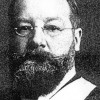
Jonathan Mulrooney, “Edmund Kean, Event”
This article considers Regency actor Edmund Kean’s presence as a figure in the theatrical news of the day, arguing that Kean’s acting style, coupled with changes in periodical print culture, reframed the relation between the British theatrical tradition, the actor’s stage performance, and audience reception. Emphasizing an “illegitimate” grammar of representation characterized by gesture, mobility, and emotional transition, Kean enacted new forms of subjectivity that aligned with emerging modes of theatrical criticism to shape readers’ concepts of their own private experience and their imagined engagement with public events.

Suzanne Keen, “‘Altruism’ Makes a Space for Empathy, 1852”
This contribution to BRANCH describes how Auguste Comte’s term “altruism” entered into English by way of an October 1852 review article by George Henry Lewes, published in the Westminster Review. Briefly accounting for the dissemination of the term through leading English Positivists and members of the Westminster Review circle, the essay suggests that, while Comte’s altruism included both a feeling reaction for others and subsequent ethical actions taken to benefit them, influential commentators such as Herbert Spencer and (in France) Darwinian psychologist Theodule Ribot segmented altruism to account for both egoistic and other-oriented responses, separating the feeling from the action on behalf of others. This separation made room for the later term empathy, which replaces the other-oriented “feeling with” of Comte’s altruism, while that term retains its meaning as costly action taken on behalf of another. The twentieth century’s association of empathy with altruism is thus explained: for the early Victorian Positivists, feeling with another and acting on his or her behalf were both encompassed by the term altruism.

Rae Greiner, “1909: The Introduction of the Word ‘Empathy’ into English”
The word “empathy” first appeared in English in 1909 when it was translated by Edward Bradford Titchener from the German Einfühlung, an old concept that had been gaining new meaning and increased relevance from the 1870s onward. While today we often treat “empathy” as a synonym for “sympathy,” if not—and more commonly—as an improvement on it, empathy at the turn of the century was used to describe a unique combination of cognitive effort and bodily feeling thought to characterize aesthetic experience. Such experience was not limited to contemplating works of art, however; for several of its earliest theorists, empathy named our aesthetic experiences of other people. It would seem to some that a radical break had been made between sympathy, seen as a primarily moral (and moralizing) activity, and a more scientific, physico-psychological process for which the human brain was hardwired. Yet the empathy of the later nineteenth and early twentieth centuries may also be seen as sharing key features with sympathy, particularly as the latter was conceptualized by eighteenth-century moral philosophy and Romantic and Victorian aesthetics.
